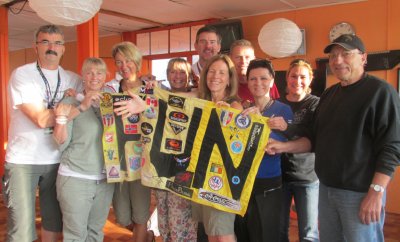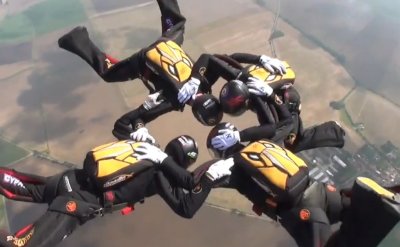
National
Skydiving
League
226 Pecan Street
Deland FL 32724
tel: (386) 801-0804
© 2003 - 2025
All Rights Reserved


226 Pecan Street
Deland FL 32724
tel: (386) 801-0804
© 2003 - 2025
All Rights Reserved


Fire Coopers, winner of the A Class competition in Teuge this weekend, had an 18.7 average in April in Bedford and finished in 1st place at the ESL Championship with a 13.6 average. That all happened after the Sun Path Products NSL News investigated the relationship between indoor and outdoor scoring level for Blue Skies Mag.
It happens to all teams that the performance in the flying chamber seems to be so much better than in freefall. Let's see why and how to deal with it.

I love that kind of drama, the athletic kind. Remember the unbelievable one-point battle between Arizona Airspeed and NMP-PCH Hayabusa at the end of Round 10 at the Mondial Dubai 2012? People were in tears, and the emotions were a very natural part of such a high-profile competition. I have no problem covering the story of winners and losers. Other than that, I don't like bad news, and I stay away from it.
I am also always on a mission to bring new people into the sport and keep the old ones around, as long as they can walk to the DZ or to the wind tunnel. You can imagine how exciting it was for me the other night to see a mix of young freeflyers and reigning POPS 4-way world champions train 4-way together at the FSL Tunnel Kicker at iFLY Orlando.

This also goes the other way around, unfortunately, as we all know. It is no fun and not encouraging to see frustrated skydivers in a bad mood. There is nothing unusual in being sad or upset after a bad training jump or a competition round; that's human and normal, as long as you turn it around quickly before it affects others. It is no good if you get so frustrated and discouraged with the results that you question your participation at all. But I can tell you, it happens; people talk of quitting when it gets really bad.
How does it get so bad? Now here comes the real point: It happens often when the expectations are very different from the results. And that happens quite often when competitors have trained and competed in the wind tunnel and then attend outdoor meets, where the average turns out to be way below the indoor results.

I asked the NSL dude to investigate the pure numbers, as they never lie.
Numbers don't know emotions and only accept interpretation — sometimes they don't even need that.
Here is one of those cases: The applied scoring numbers of 2012 and 2013, with data from all performance levels and most regions of the world, give the AAA Class indoor team a 23.7 average.
The same teams combine for a 19.9 average when they jump from planes. (NMP-PCH Hayabusa, as one prominent example, dropped from a 31.4 average in the tunnel to 27.1 outside).

Surprised?
You shouldn't be, since it only makes sense. Team training and competition in the wind tunnel is completely different from freefall. Body position and balance are different without the gear, jumpsuit and booties work differently, and the references change. It is a different world in the flying chamber.

We think that we can get to the indoor scoring level pretty quickly and soon. But we cannot; it takes time and jumps.
All right, here is the troubleshooting tool box. First thing: Change your expectations and get real. The numbers are facts; they tell you what you can expect. Second: Use the incredible training tool wisely that Bill Kitchen invented for us in 1998. Wind tunnels are an incredible training tool and sooooo much fun to use. They can be very efficient and can boost your performance level. But you have to know what is helping you and your team, and what might even be counterproductive.

In other words: Have one plan for your indoor training, and another one for the outdoor training — and then get the results of those combined efforts.
Always keep in mind: You will still be four to five points below your indoor average when you jump from the plane. Maybe only three if you train wisely. But most importantly: You will never get frustrated.